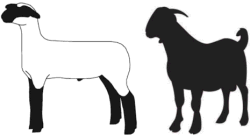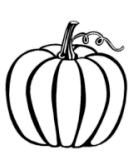

To send a message to an author, click on the author's name at the end of the article.
This Month in Ag Connection | Ag Connection - Other Issues Online
USDA Farm Service Agency (FSA) is in the midst of administering the Coronavirus Food Assistance Program (CFAP). Applications will be accepted through August 28, 2020. The purpose of the program is to help farmers and ranchers who were impacted by the pandemic through direct payments.
USDA allotted the CFAP program $16 billion to producers who suffered a five percent or greater price decline due to COVID-19 and experienced additional significant marketing costs due to lower demand, surplus production and disruptions to shipping patterns. The $16 billion is the combined total from two possible funding sources. The first source is $9.5 billion provided in the Coronavirus Aid, Relief, Economic Stability (CARES) Act to compensate farmers for losses due to price declines that occurred between mid-January 2020 and mid-April 2020. The second funding source uses the Commodity Credit Corporation (CCC) Charter Act to compensate producers for $6.5 billion in losses due to on-going market disruptions.
The program is designed to make sure there is funding available to all qualified producers who apply. Upon approval of the application, producers will receive 80% of the maximum total payment. The remaining payment will be paid at a later date, as funds remain available.
The list of eligible commodities is lengthy and are those that USDA has data available to determine that a five percent or greater price decline occurred from mid-January 2020 to mid-April 2020. The common eligible commodities include: corn, oats, sorghum, soybean, sunflowers, cattle, dairy, hogs, lambs and various horticulture crops.
USDA will consider additional commodities if credible price evidence is provided. The guidelines to submit data is on the USDA website: https://www.farmers.gov/cfap. To date, the most common ineligible commodities are sheep more than two years old, goats, eggs/layers, soft red winter wheat, hard red winter wheat, forage crops and hemp.
USDA has an Excel spreadsheet payment calculator tool on the CFAP website to help with inventory and sales needed to calculate and apply potential payments. The tool allows producers to print a pre-filled CFAP application. Producers can take that when they meet with FSA and eventually it will need a signature. The tool can be found on this website: https://www.farmers.gov/cfap
The payment limitation for CFAP is $250,000 per person and legal entity. The limitation applies to the total amount of CFAP payments. For details about payment limitation rules for corporations, limited liability companies and limited partnerships check with your local FSA office.
If you need help with the Excel spreadsheet calculator tool contact your local University of Missouri Extension ag business specialist.
To apply for the CFAP program, contact your local county USDA FSA office.
Source: Mary Sobba, Ag Business Specialist
This Month in Ag Connection | Ag Connection - Other Issues Online
The barber pole worm, Haemonchus contortus, is the most costly parasite affecting sheep and goats throughout the United States and much of the world. It thrives in warm, wet weather and can survive in pastures for months. Larvae are ingested by the host while grazing, develop into adults in the host's stomach, and produce eggs that are passed in the feces. In 3-4 days, the eggs hatch and the cycle of infection begins again. Although all ages of sheep and goats are vulnerable, recently weaned animals are the most at risk because of their lowered immune systems. Other animals at risk are those kept on overgrazed pastures with dense stocking rates, and animals with nutritional deficiencies, particularly those with diets low in protein. The main clinical sign of infection is anemia, but other symptoms include weight loss, bottle jaw, weakness, and collapse. Failure to control the parasite can lead to death.

Control methods include proper pasture management, good nutrition, and using anthelmintic dewormers. Unfortunately, overuse of dewormers has led to parasitic resistance of many products. One way to help prevent parasite resistance from developing is to only treat infected animals. FAMACHA scoring is a method of determining which animals are anemic and therefore likely infected. FAMACHA scoring uses laminated cards with a 5-point color scale to assess anemia. The scale ranges from a 1 (reddish-pink and healthy) to 5 (pinkish-white and anemic). The color scale on the card is compared to the mucus membrane of the lower eyelid and animals that are scored 4 or 5 receive parasite treatment. Flocks should be FAMACHA scored every two to four weeks throughout the spring and summer and depending on the percentage of the flock that scores 4 or 5. Flocks should be scored more frequently if a large portion require treatment. Animals requiring repeat treatment should be culled. This helps select for parasite resistant flocks and also helps decrease pasture contamination since these animals have the largest parasite loads. Contact your veterinarian for more information and training on how to use FAMACHA scoring.
Source: Jenna Monnig, Livestock Specialist
This Month in Ag Connection | Ag Connection - Other Issues Online
The Northeast Missouri Show-Me-Select Replacement heifer program held a fall calving heifer sale where 138 heifers averaged $1,815 per head. The sale was held on Saturday, May 30th at F & T Livestock Auction in Palmyra.
There were nine producers enrolled in the University of Missouri Extension's educational heifer management program who participated in this year's sale. The heifers were bred to sires with both calving-ease and growth genetics. The top selling lot, consigned by Twin Hill Stock Farm, brought $2,500 per head.
Highest consigner average was $2,000 per head on two heifers from JB Ranch, Ewing. Other high averaging consignors were Harold Trump, Luray, $1,925 per head on six heifers; Schieffer Farm, Troy, $1,906 per head on twelve heifers; Twin Hill Stock Farm, Silex, $1,879 per head on thirty-four heifers.
Twenty-three buyers purchased over $250,000 worth of bred heifers; exchanging hands in less than 50 minutes. Calving surveys returned by buyers provide important information that is given back to consignors to guide improvements in future years.
The Show-Me-Select heifer development program takes nearly a year to complete. Pre-breeding exams are completed on heifers 4 to 8 weeks before being bred. These exams include a pelvic measurement, reproductive tract score, and weight record. Heifers may be bred artificially or be exposed to natural service, however; the service sires must meet specific calving ease EPD requirements based on breed. This year 69 head, or 50 percent, of the heifers in the sale were synchronized and bred AI. In this sale, the choice to AI, resulted in a $42 price advantage over those bred naturally.
All heifers must be pregnancy tested within 90 days of breeding by a veterinarian to determine expected calving date. The use of ultrasound has helped many veterinarians improve their accuracies on calving dates. During the development period the heifers undergo an extensive health program and are vaccinated at weaning, pre-breeding, and pregnancy examination as well as treated several times for internal and external parasites. Heifers are also screened for blemishes, condition, muscling and structural soundness by MU Extension livestock specialists and Missouri Department of Agriculture graders.
This is the 24th year for the Show-Me-Select heifer sale in Palmyra. Over 50,000 heifers have been through the program, and 7,002 head have been sold. If you are interested in the Show-Me-Select heifer program, contact your local MU Extension Livestock Specialist.
Source: Daniel Mallory, Livestock Specialist
This Month in Ag Connection | Ag Connection - Other Issues Online
Cover crops are planted when a crop field would otherwise be fallow. They are an effective way to reduce soil erosion, add organic matter, improve soil tilth and water infiltration and reduce runoff. If forage is in short supply, grazing cover crops can help fill the void.
Brassicas like turnips and radishes should be planted between July 15 and September 15. Plant early to maximize forage yield for grazing. These crops will not overwinter and should be grazed by January 1 to utilize the forage. Cattle will graze the above ground material and will pull the bulbs out of the ground and eat them. Limit consumption of brassicas to 75 percent of the animal's diet to prevent metabolic issues, including bloat. Oats are a good companion crop for brassicas since they do not survive cold winter temperatures, eliminating the need to terminate the cover crop in spring. It should also be noted oats can be planted from July 15 to October 15.
Small grains like wheat, cereal rye and triticale can be planted later in the autumn up to early November. They will provide some autumn grazing and will overwinter to provide early spring grazing. Cereal rye will provide the most forage, but quality rapidly declines in spring as the plants mature. Wheat will not provide as much forage, but will maintain higher quality later in the spring. Triticale is a cross between wheat and rye and falls between the two in both yield and quality.
Legumes like clover provide high quality forage and can be planted in the early fall. If allowed to grow long enough in the spring, they can provide some nitrogen to the following crop. Legumes that are terminated early in spring will not have adequate time to produce nitrogen. The nitrogen fixing bacteria are not active when soil temperatures are cool.
Be mindful of the pesticides used on the cash crop planted this growing season. Some herbicides will have enough residual activity to prevent certain cover crops from germinating. Additionally, some pesticides have grazing and haying restrictions. Check product labels for information about crop rotations and grazing restrictions.
Visit the Midwest Cover Crop Council website at www.mccc.msu.edu/ and click on the Selector Tools button to learn more about which cover crops will suit your operation.
Source: Valerie Tate, Agronomy Specialist
This Month in Ag Connection | Ag Connection - Other Issues Online
Ornamentals:

Vegetables:

Fruits:
Lawns:
Source: Missouri Botanical Garden
Publishing Information
Ag Connection is published monthly for Northeast and Central areas of Missouri producers and is supported by the University of Missouri Extension, the Missouri Agricultural Experiment Station, and the MU College of Agriculture, Food and Natural Resources. Managing Editor: Mary Sobba.